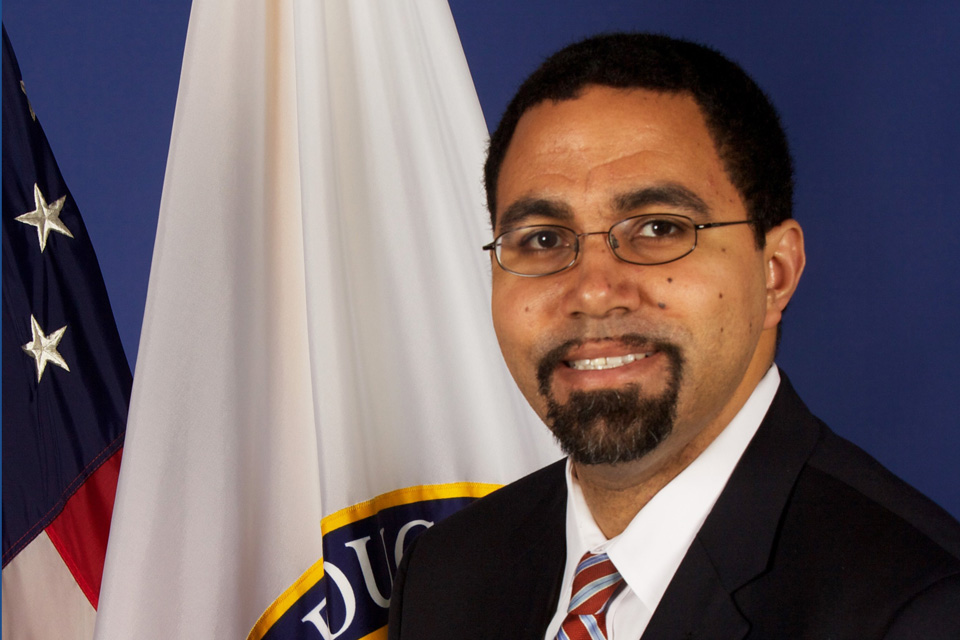Why Schools Are Abandoning Zero Tolerance
Even the theory’s biggest promoter has. But what is the alternative?
When John King was made acting Secretary of Education last fall, educational activists questioned President Barack Obama’s selection. After all, King was the founder of Boston’s Roxbury Prep, a school that exemplified the zero-tolerance discipline policies.
Roxbury boasted some of the highest test scores and graduation rates in the country for inner city kids. But its accomplishments came at a huge cost: suspending nearly 60 percent of its students and dumping students back into the regular public school system who did not meet the school’s standards.
The Department of Education under Secretary Arne Duncan no longer supported zero-tolerance policies like those at Roxbury, and I wondered whether the new secretary, King, would hold to his previous positions on discipline or get on board with this new department policy. I raised that question in a column for Urban Milwaukee explaining why Milwaukee Public Schools had moved away from the zero tolerance approach.
As it turns out, King was moving away from the policy as well.
In a speech this summer before the National Charter Schools Conference in Nashville King stated that it was time for “rethinking discipline.” According to King, nearly three million students were suspended during the 2013-2014 school year, and those suspensions often were counterproductive. Suspended students were more likely to “be retained in grade or to drop out, and we know exclusionary discipline feeds the school-to-prison pipeline.”
But King also stated that schools needed to be safe, orderly places. The choice shouldn’t be between zero-tolerance and chaos. Schools needed to create a culture where students would want to do their best, where students are supported, and alternatives to suspensions and expulsions get students back on the right track.
Back in Milwaukee, a military-style voucher school, Right Step, had similar support until parents countered in a lawsuit that their children were punched, kicked, slapped, and required to endure humiliating acts such as lying in their own vomit or drinking from a cup filled with an instructor’s spit, the Journal Sentinel reported.
In July, the City of Milwaukee was forced to sell an empty MPS building to Right Step under the provisions of a new state law, but the city is fighting to deny the program an occupancy permit.
However, the alternative to zero-tolerance can’t be chaos.
Reporter Dan O’Donnell raised this same issue in his WISN radio segment entitled “Blood on the Blackboard: Violence Against Teachers in Milwaukee Public Schools,” which aired in June. He featured the stories of several MPS teachers who were kicked, punched, and brutalized by students in their schools. But their principals, according to these teachers, did little or nothing because they were under orders to get their suspension rates down. The end of zero-tolerance had turned to chaos.
I told O’Donnell it was difficult to determine to what extent some schools were in chaos due to the ending of zero-tolerance policies in MPS. Were these problems wide-spread or was O’Donnell just hearing from a handful of vocal teachers?
Perhaps some principals simply did not feel they had real alternatives to suspensions which meant that students felt they could do anything they wanted without any repercussions. But if all we do is suspend students, then what? Do we end up with teenagers out stealing cars or causing other problems because they have been suspended from school so many times they are no longer regular attenders?
I told O’Donnell, “There are two ways you can get suspensions down. One way is that you can have good alternatives in which you have everybody on the same page, and you have good rapport with your students, and you will get your suspension rate down. The other way is that you don’t suspend anybody, and the kids run wild.”
We can’t let the kids run wild, and we may not be able to return disruptive students back to a regular classroom, so we must have alternative and preventive programs, not just kicking the kids out onto the street.
MPS is training educators, establishing Restorative Justice programs and alternative schools. The school system would like to hire more psychologists and counselors; however, MPS receives state funding mostly for education, less for other support services.
So Secretary King might be correct to rethink our zero-tolerance policies. The real question is what to put in its place.
Terry Falk is a Milwaukee school board member, former teacher and longtime free lance writer.
Op-Ed
-
Unlocking Milwaukee’s Potential Through Smart Zoning Reform
 Jul 5th, 2024 by Ariam Kesete
Jul 5th, 2024 by Ariam Kesete
-
We Energies’ Natural Gas Plans Are A Mistake
 Jun 28th, 2024 by John Imes
Jun 28th, 2024 by John Imes
-
Milwaukee Needs New Kind of School Board
 Jun 26th, 2024 by Jordan Morales
Jun 26th, 2024 by Jordan Morales























The first thing that comes to mind is how the District Attorneys, Judges & Police are treating low-level offenders & mid-level offenders & high-level offenders until it’s a high profile case or some other political third rail they can’t ignore.
In the meantime, they wail about they just can’t do anything… like the pathetic principals mentioned above that choose to have no discipline instead of harmful discipline. Toss them all out & start over, it’s not like it would make the situation worse.
MPS needs to create boarding schools. A suspension is not a punishment for a student who hates school. And if a student is acting out so badly that a suspension is even considered, you already know that discipline at home is not effective – if it were the student would not be behaving like that in the first place.
Only when the “controlling body” (parents or school or prison, eventually and unfortunately) can impose actual consequence will behavior change. We don’t want it to have to be the prisons, so then what? At least at a boarding school you could take away privileges as a punishment for misbehavior. Schools as they are can only discipline with carrots, the sticks they pretend to use are no such thing. True discipline requires BOTH carrots and sticks. If parents are not providing the stick and the school can’t, the prison pipeline is all too eager to do it for them…
Yes, a boarding school is kind of like a prison, but hopefully it could keep the student from progressing to the real thing. Does not a High School have prison-like qualities (youth are compelled to attend against their will, after all)?
Hopefully the educational system will recognize zero tolerance and social promotion is not the way for developing the best education for America.
All schools should have security and surrevalance to reduce bullying and drug trafficking. All classrooms should have video auditing for reviewing the teachers lessons and students behaviors for documentation and improving educational engagement.
First, develop a code of conduct whose purpose is to maintain the flow of education so that each child’s property right to an education is not inhibited. Include rules for classrooms, hallways, lunchroom, bathroom, assemblies, activities and entering and exiting the building. Expect without exception manners: please, thank you, excuse me and wait quietly when someone is speaking to you. Teach, model and make civility a part of the code of conduct.
Consequences: Office referrals- parents get a copy; detention after school and at lunch, detention can be active/work or sitting/study; in-school suspension – coordinated/run by a teacher or teacher aide, assigned for a half day or the entire day, individual teachers can pull the student for one period; shadow – parent shadows their student for the day or half a day, this may include detention and in school suspension;
suspension from 1 to 5 days, work that can be accomplished at home must be completed upon return, failure to complete work results in in-school suspension to finish the work. Parents must meet with Principal or Vice principal, guidance counselor and social worker if necessary for review.
Support: Conflict resolution program to reduce bullying and prevent fighting. Welcome back! program when a student returns from a suspension. Guidance, counseling and shadowing by administrator.
Administration: Principals must be in the classroom 20-25% of their day, observing, monitoring, intervening and helping students. This is the most critical piece of all. Forget the meetings » students, parents and teachers are your responsibility.
Parents: after school program for parents and children to do their homework together with teachers at the helm. One hour followed with food and beverage. Let the moms figure out what to bring.